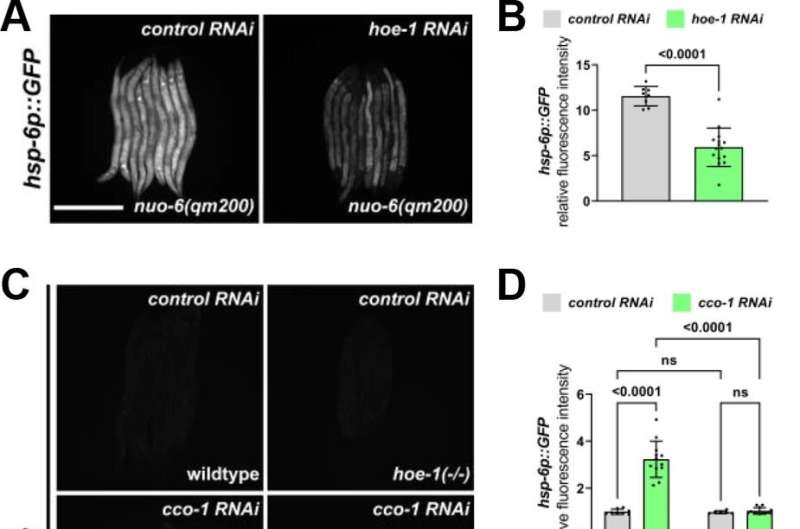New aging-related molecular pathway discovered

A collaborative project between the labs of Maulik Patel, assistant professor of biological sciences, and Kris Burkewitz, assistant professor of cell and developmental biology, has identified a new molecular pathway that plays a key role in the ability of cells to sense and respond to stressed mitochondria. Defects in mitochondrial function are particularly relevant to aging and aging-related diseases.
Led by Patel lab graduate student James Held, the work showcased the combined expertise of the Patel and Burkewitz labs—in genetics and in cell biology and imaging, respectively. "While most of the field focuses on protein damage, Held and Patel had a very innovative idea to examine whether mitochondrial stress is triggered at the RNA level," Burkewitz said. " When they found another surprise—clues that some of the key events in this new pathway were occurring outside of mitochondria—we jumped at the opportunity to help them visualize these processes at the scale of individual organelles."
Together, the researchers' labs discovered a novel RNA-based cellular pathway that modulates the predominant mechanism that preserves mitochondrial function under stress.
Mitochondria are responsible for producing most of the energy our cells need, and mitochondrial decay directly relates to aging and aging-related diseases. Given the importance of mitochondria, cells have a way to sense and respond when mitochondria are under stress, but how they do this is not fully understood.
"This work helps identify cell pathways that are commonly disrupted in diseases and old age," Held said. "These could be targeted to cure diseases and to slow the aging process."
"This work opens new avenues for research into the question of how cells sense and respond to stressed mitochondria that we hope to address in the short term," Patel said. "In the long term, we hope to identify drug targets that will allow us to manipulate these mitochondrial stress-sensing pathways to maintain mitochondrial quality in disease and in old age."
The research was published in eLife.
More information: James P Held et al, A tRNA processing enzyme is a key regulator of the mitochondrial unfolded protein response, eLife (2022). DOI: 10.7554/eLife.71634
Provided by Vanderbilt University



















